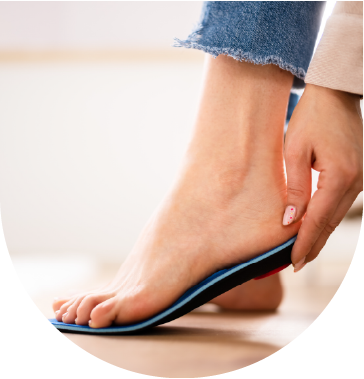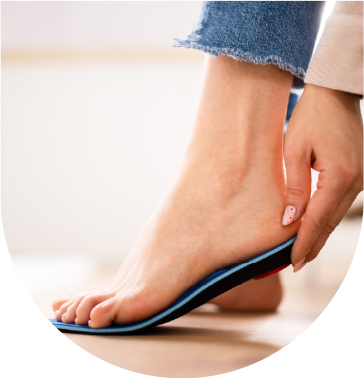Baseline Testing in Youth Athletes – Hop & Jump Analysis

Patient
ABOUT THE practitioner
Dr. Christopher Proulx
Director of Education at Baliston Health
Massachusetts, USA
D.C., Ph.D.(abd), C.S.C.S
Private practice and consultant as a physical medicine and rehabilitation specialist and performance coordinator for individuals and athletic teams.
Holds a Doctor of Chiropractic, PhD(abd) in Exercise Science, Master’s of Science in Exercise Science, and a Bachelor’s of Science in Sport Management and Health Fitness.
Over 25 years of experience in sport and clinical sciences.
Authored and co-authored several peer reviewed publications and has presented his work across the U.S., Central and South America, China, and Europe in many different venues.
Consultant to several manufacturers, clinicians, athletes, and coaches at all levels.
Licensed chiropractor, certified strength and conditioning specialist and former certified athletic trainer (15 years).
PATIENT PROFILE and Reason for Analysis
A 9-year-old male multi-sport athlete engaged in soccer, basketball, and baseball.
He is of average height and weight (65th percentile), right-hand dominant, and currently injury-free. Known for strong on-field performance, he also participates in regular recreational physical activities
Overview
Establishing a baseline for physical performance in youth athletes provides invaluable insight into biomechanics, symmetry, and injury prevention.
This case explores how advanced video-based hop and jump assessments can reveal early movement patterns—even in high-performing, injury-free children—that may benefit from simple technique refinement.
Testing and evaluation procedures and findings
Triple hop, single hop and CMJ, including video capture. There is also a treadmill walking test conducted previously.
Good symmetry in stance and all other spatiotemporal parameters of walking cycle, within normative values for age, height and speed. Overall, shifted values (medial to green corridor) for foot contact orientation in stance phase for both feet. Toe off on the right shift in the opposite direction.


Foot progression angles fall within normal for both feet, however they are asymmetrical with the right foot being close to zero and left at 7.4 degrees.
Sagittal angles for toe off and heel strike are symmetrical and within normal values. Included is an anterior view of the CMJ, to point out positions during take off and landing especially. On take off, slightly wide stance with knee valgus most pronounce in bottom position, otherwise good form in the movement.


Just to note, slight internal rotation of the right leg. Upon landing there appears the potential of slight knee valgus moment but certainly not as pronounced during rake off. Landing also appeared to have minimal hip and knee flexion. The performance measures for flight time are very symmetrical



There are some slight differences in both take off angle and take off velocity however landing characteristics very symmetrical. There is a 6% difference in single leg horizontal hop distance, favoring the left at 49in vs 46.6 on the right. Take off angles are similar but velocity of take off favor the left by 123 degrees/sec and jump height is higher. Landing acceleration is higher on the right as well as the position of the foot, more angle of the heel to toe relative to the ground.


Rotation around Z(difference between take off and landing) both adduct/internally rotate however the right is quite signification. Landing in the transverse plane shows much greater supination/inversion on the left.
The hop distance in the triple hop is exacerbated, advantage to the left and also significantly greater contact times on the right. Rotation around Z pronation/supination were quite symmetrical.




Interpretation of findings
He has good jump height in CMJ for his age group, and fairly similar take off and landing characteristics. On video, there is obvious hip/ankle internal rotation adduction respectively, however it is most corrected by landing. He seems to not fully correct this in hop tests. Hop tests have shorter flight times, therefore it could be timing and technique. There appears some definitive advantage on the left for strength (single hop) and power (triple hop). A consistency is seen in the take off angles of all jumps, capitalizing on plantar flexion for the left, which could be related technique and/or range of motion as well.
Conclusion
Although this was not for the purposes of concussion evaluation, according to the Centers for Disease Control and Prevention (USA), baseline balance and concussion testing should be done for ages 10 and older. These tests are not specific to balance and concussion per se, however they do have elements that might be used to evaluate certain nervous system injury. Vertical jump testing dates back over a 100 years in physical education.2 In Taylor, he would rank in the 50th percentile for a 10 year old, although he was 9. 3
In any event, we can see in the video capture that some simple technique instruction may change his performance relatively quickly. The stance width in take off of the CMJ appears to wide and may also contribute to his dynamic valgus upon landing. A combination of strengthening exercises and jumping/landing technique has been employed to correct abnormal take off and landing.


This is also intended to close the gap between left and right leg differences in horizontal jump performance, not unusual in certain young athletes (see Return to Play, Can We Do a Better Job? Part 2 for more discussion on this). Range of motion in ankles were within normal limits and symmetrical. Jumping and hopping training can provide both technique as well as actual performance enhancement. Although these tests have been minimally used in younger populations but is growing in popularity and usefulness.


